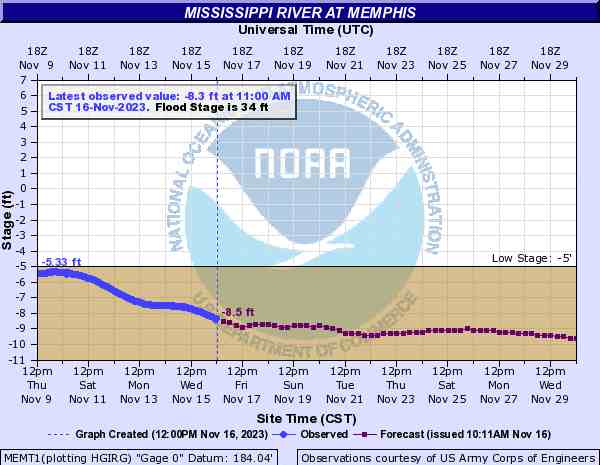This recurring drought is expected to persist throughout the winter, impacting not only the ecosystem, but also the economic aspects of the region. A forecast for a mild winter in North America, with below normal moisture will not help recharge soils or help replenish waterways.
The fluctuating water levels on the Mississippi River have a direct impact on the transportation industry. As recovery proves to be temporary, basis and freight rates are expected to be adversely affected once again. This has far-reaching consequences for various commodities and manufactured products relying on the river for efficient transport and exports to the rest of the world.

Efforts are underway to address the situation, with the United Soybean Board (USB) is taking proactive measures. Feasibility studies initiated by USB have resulted in crucial developments, including the dredging of the Mississippi River in Louisiana, an expansion of terminals at the Port of Grays Harbor in Aberdeen, Washington, and a negotiated reduction in freight tolls along the St. Lawrence Seaway.
The dredging of the lower Mississippi River is particularly significant, enabling barges to transport an additional 500,000 bushels per ocean vessel. This enhancement carries the potential to generate an annual realized value increase of $461 million for U.S. soybean farmers.
October marked the driest month since 1950, resulting in a water shortage that is significantly reducing traffic through the Panama Canal.
Projections suggest that, by February, only 18 ships per day will be able to traverse the canal, marking a drastic decline from the previous year at 32 per day -- down 56%! This issue affects a broad spectrum of commodities and products, with a particular emphasis on the energy sector.
The energy sector, is heavily reliant on the canal for transportation and faces critical challenges. In the previous year, almost half of the goods passing through the canal locks consisted of oil and gas-based products, including diesel, gasoline, and liquefied petroleum gas (LPG). With the U.S. exporting propane, a type of LPG, at record levels, the canal's limitations pose a significant threat to the global energy supply chain.
In the heart of the Brazilian rainforest, the Amazon River is facing a crisis as it fell to its lowest level in over a century on October 16th. This record drought is disrupting the lives of hundreds of thousands of people and damaging the delicate jungle ecosystem.
Drying tributaries have left boats stranded, cutting off essential supplies to remote villages. The port of Manaus, the region's most populous city, recorded its lowest water level since 1902 at 13.59 meters compared to 17.60 meters last year, exacerbating the challenges faced by both the population and the environment.
Shipping service providers operating in northern Brazil reported disruptions in navigation along tributary rivers leading into the Amazon River, impacting grain terminals. ANEC reported in October that there were indications of small quantities of grain being redirected to river ports in southern Brazil. In response to the crisis, the government committed nearly $20 million in emergency dredging aid.
These may seem like foreign events that have no impact on farming, but that could impact every farmer's bottom line.